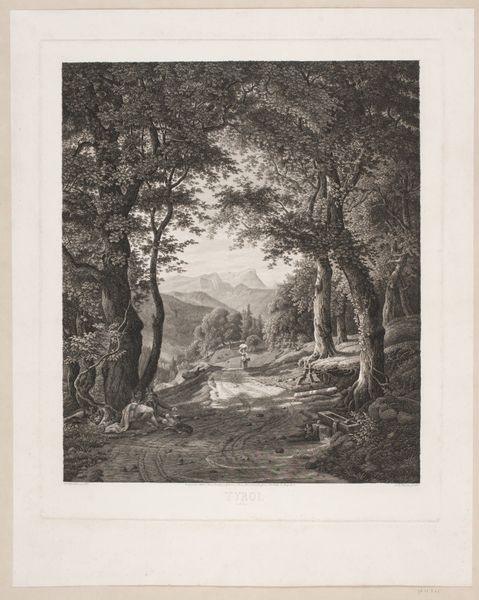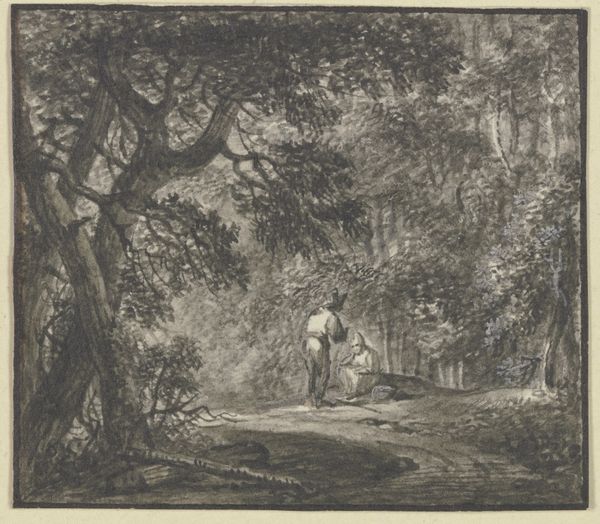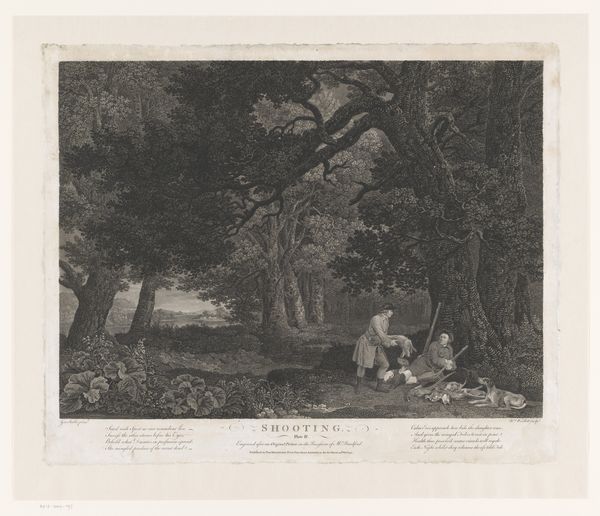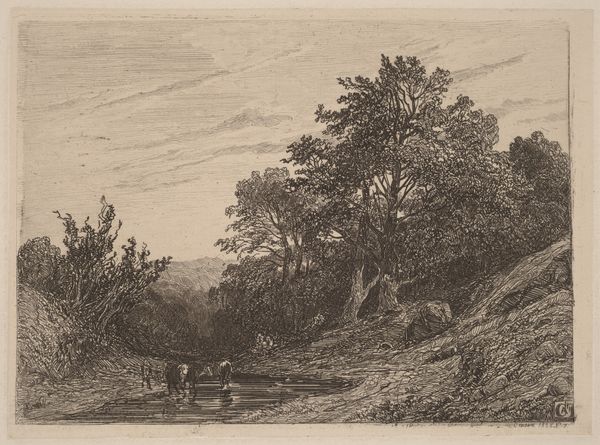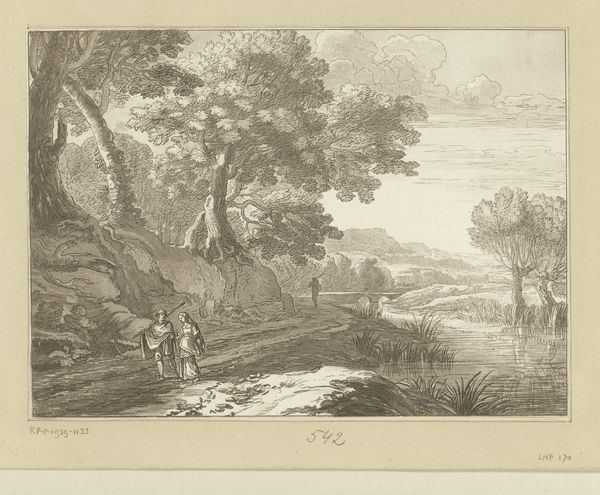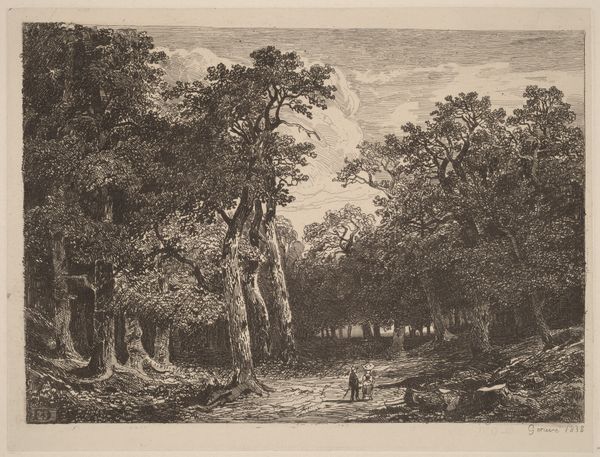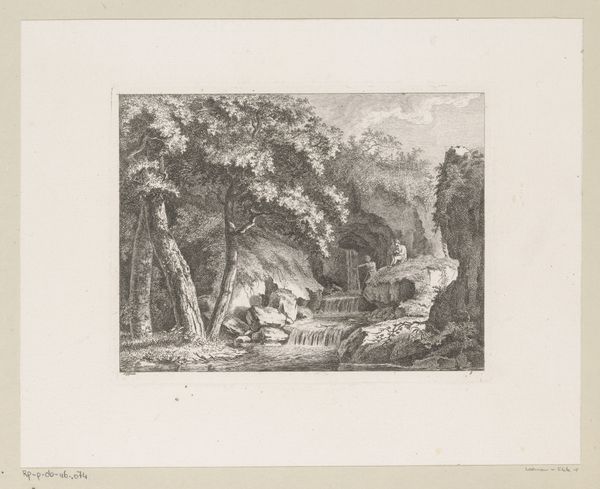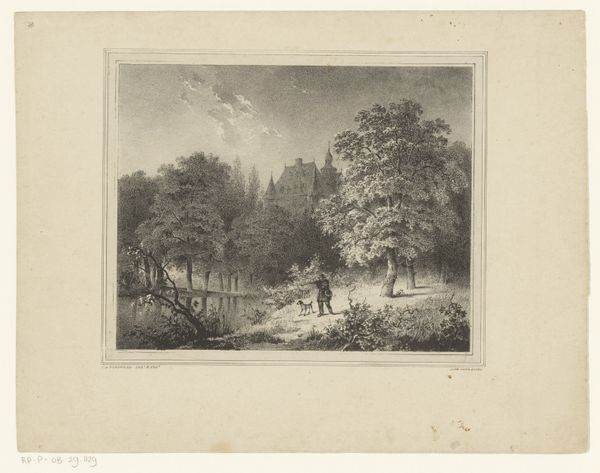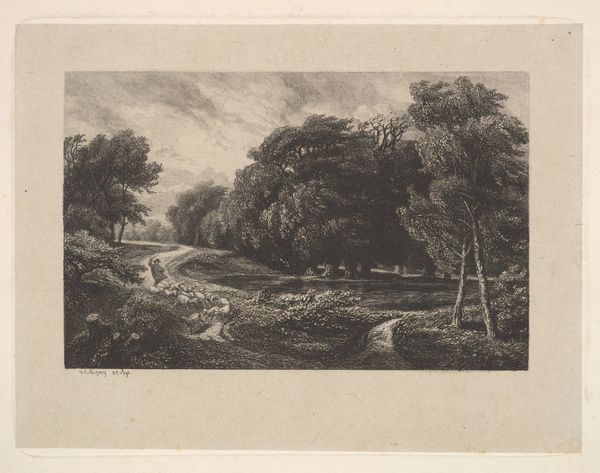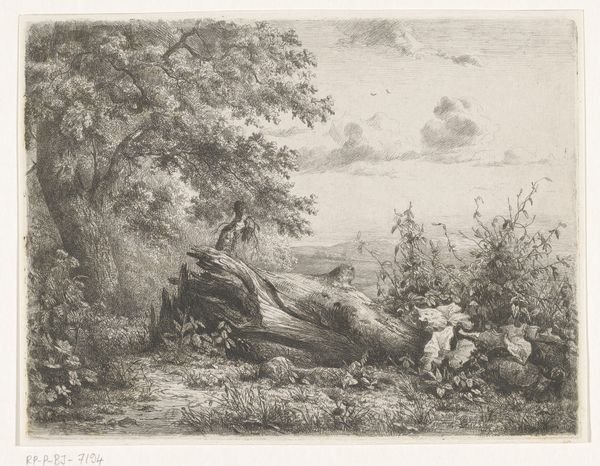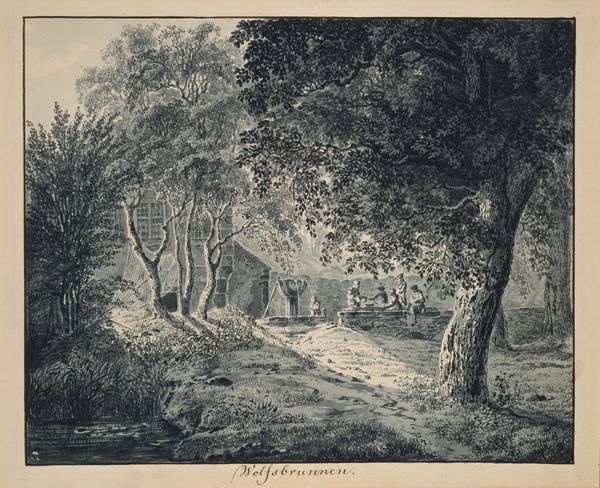
Procris and Cephalus (Liber Studiorum, part VIII, plate 41) 1812
0:00
0:00
drawing, print, etching
#
drawing
# print
#
etching
#
landscape
#
charcoal drawing
#
pencil drawing
#
romanticism
#
watercolour illustration
#
history-painting
Dimensions: plate: 7 3/8 x 10 1/2 in. (18.7 x 26.7 cm) sheet: 8 1/2 x 11 1/2 in. (21.6 x 29.2 cm)
Copyright: Public Domain
Curator: Turner's "Procris and Cephalus," dating to 1812, is an etching from his Liber Studiorum series. My first impression is melancholy, a pastoral scene filtered through shadow and grief. Editor: The image feels steeped in Romantic symbolism. Note how the positioning of the dog directs our eyes to the couple in a forest—can you unpack the layers of myth? Curator: Let’s consider this from a craft perspective. The etching technique is so detailed and the work appears on paper. Turner likely began with drawings from nature before meticulously rendering the scene on the copper plate, which feels pretty labor intensive, right? We’re far removed from mass production, embracing handmade skill and artistry. Editor: Absolutely, the labor contributes to the work's aura. Procris and Cephalus, you may recall, were figures from Ovid's Metamorphoses, representing love, fate, and tragic misunderstanding. Cephalus accidentally kills his wife Procris, hence the pervasive atmosphere of loss—evident even in the sepia tones and darkening shadows, you think? Curator: Those earth tones—are they just for aesthetic purposes, or could they signify the toil required to coax a living from the land during the period when Turner worked on this series? And by depicting laborers, Turner questions these assumptions by turning landscapes into social commentaries? Editor: I believe both readings hold value, revealing art as both symbolic narrative and document. In essence, a reflection of social anxieties manifested as artistic license? Turner frequently combined landscape and historical themes, which speaks volumes. The landscape is rarely "just" a landscape, is it? Curator: Precisely. When we study the social context surrounding the consumption of landscape art, like Turner's etchings, then it may seem so revolutionary. It really underscores art's intertwined relationship with the economy. Editor: Agreed. I appreciate you steering our attention back to how the narrative elements are embedded in layers of materials. It gives a richer reading, and provides insights for our viewers. Curator: Thanks! Seeing art as an intricate creation and then understanding it socially is really exciting to me. Editor: I couldn't agree more. Turner asks us to see beyond the immediate, connecting labor, history, myth and materiality, even for contemporary viewers.
Comments
No comments
Be the first to comment and join the conversation on the ultimate creative platform.

